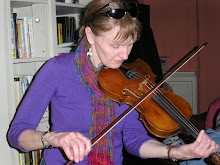 Friday 29 April, 2011. Being in Edinburgh on the day of the Royal Wedding was auspicious. Because of the wedding, it was a national holiday. Although many Scottish citizens were caught up in the celebration, just as many were not interested in the spectacle.
Friday 29 April, 2011. Being in Edinburgh on the day of the Royal Wedding was auspicious. Because of the wedding, it was a national holiday. Although many Scottish citizens were caught up in the celebration, just as many were not interested in the spectacle. I must admit, I ended up watching the ceremony on BBC tv at first just to see the wedding dress. Then I stayed tuned and was thrilled to have choral music so prominently featured in the ceremony. I’m a St. Olaf Choir alumni so am steeped in the choral tradition. Here is a link to the sublime “Ubi Caritas Et Amor” by Welsh composer, Paul Mealor who lives in Aberdeen, Scotland. http://www.youtube.com/watch?v=3KjZvC_ga9M
I was delighted when the Bishop of London started the homily with a quote of Catherine of Siena, whose feast day was also today. “Be who God meant you to be and you will set the world on fire.”
For the travelers it was their only free day of the tour. We started with a 1 hour bus tour of the old and new city for orientation and then turned them free on the Royal Mile. I truly don’t know what they did, but here is my photo montage as I walked around taking care of some business.
Holyrood Palace is the official residence of the monarchy when they are in Scotland. It is at the bottom end of the Royal Mile. At the top end is Edinburgh Castle. It is built upon the plug of a long extinct volcano and blends right into the rocky parapet.
The Royal Mile is the length of a Scots Mile. A Scots Mile is 320 falls or 8 Scots Furlongs. That is, 1936.5 yards (about 1.1 miles) The Scots Mile was replaced by the Imperial Mile by the end of the 1800’s.
You see just about every kind of person walking down the Royal mile, including this chap who was perhaps practicing to be the “green man” at a Beltane celebration on May 1?
Blossoms everywhere in the city. Although, finally on Day 4 of the tour, we had our first overcast day with only a hint of sun in the early afternoon and an hour of drizzle by tea time. With day after day of sun, my travelers were wondering why I emphasized excellent raingear and layers of clothing in my trip planning letters and forgot to include sunscreen in the packing list. The answer is, April 2011 is the warmest and driest on record in Scotland.

The “new town” starts at Princess Street. It was built between 1765-1850. Here stands the Victorian Gothic Scott Monument. It was finished in 1844, just twelve years after author Sir Walter Scott’s death. Scott was a born in Edinburgh and his classic books are still widely read today.
After a day of tramping about, we ended the day at the Partick Folk Club. http://www.scottish-folk-music.com/folk-clubs/partick-folk-club.htm
Folk clubs are prevalent around Scotland. Many have a regular concert schedule. The Partick Club meets the last Friday of each month. It is known for the homemade soup served at the interval (intermission). The featured group of the night was “Lurach”. These 3 young Scottish women met at a music camp in the Outer Hebrides. They combine singing in Gaelic and Scots, and instrumentals on penny whistle, flute, banjo, fiddle and bouzouki. Unfortunately, it was too dark to get a good shot of the group. But you can listen here. http://www.myspace.com/lurach/
Local musicians filled the “floor” spots at the start of each set. We were delighted that the club host asked our own Jenell Pierson to sing in one of these spots. Jenell is studying at the New Brunswick College of Art and Design. And she just released her first recording this year. She not only sings, but plays guitar and piano and wrote all the songs on her album “Home” http://www.myspace.com/jenellpierson Here is Jenell, right, and her mom at Verdant Works the next day. 
I met my Glaswegian friend Glynn at a folk club on my first trip to Scotland. As Glynn recalls “I met you one night, the next night you and your big backpack were camped out at my flat, and the next weekend we were off to the Killin Folk Festival.” Because of Glynn and her mom and dad, I became hooked on Scottish music and musicians. They were our guests at the concert.









































